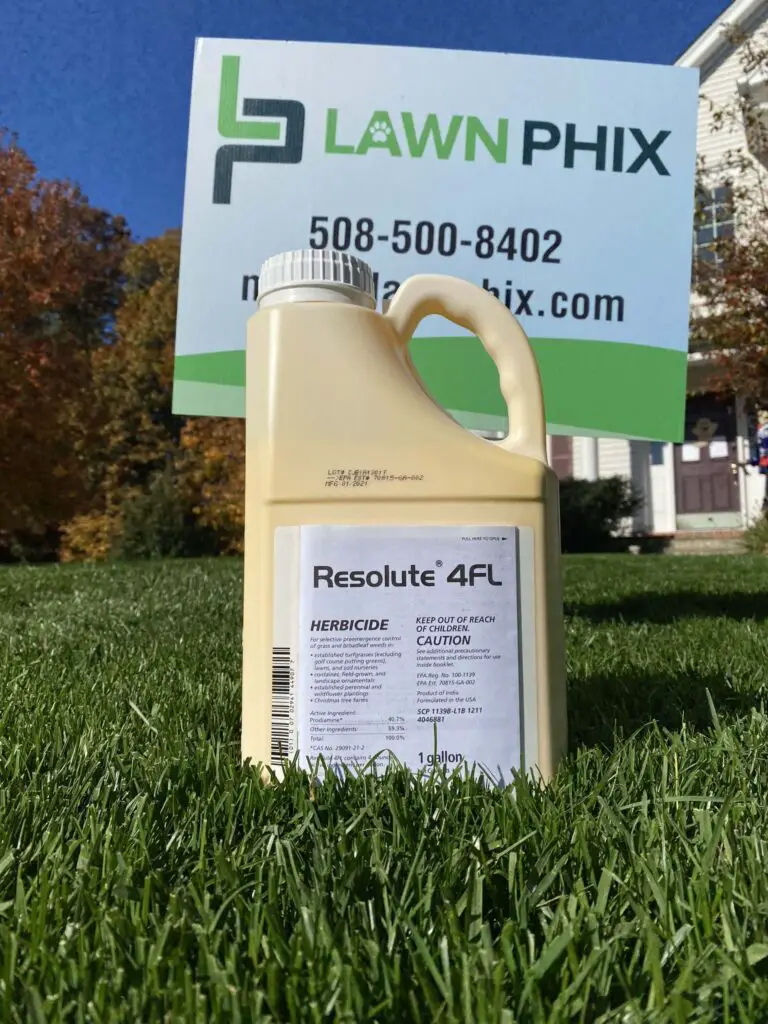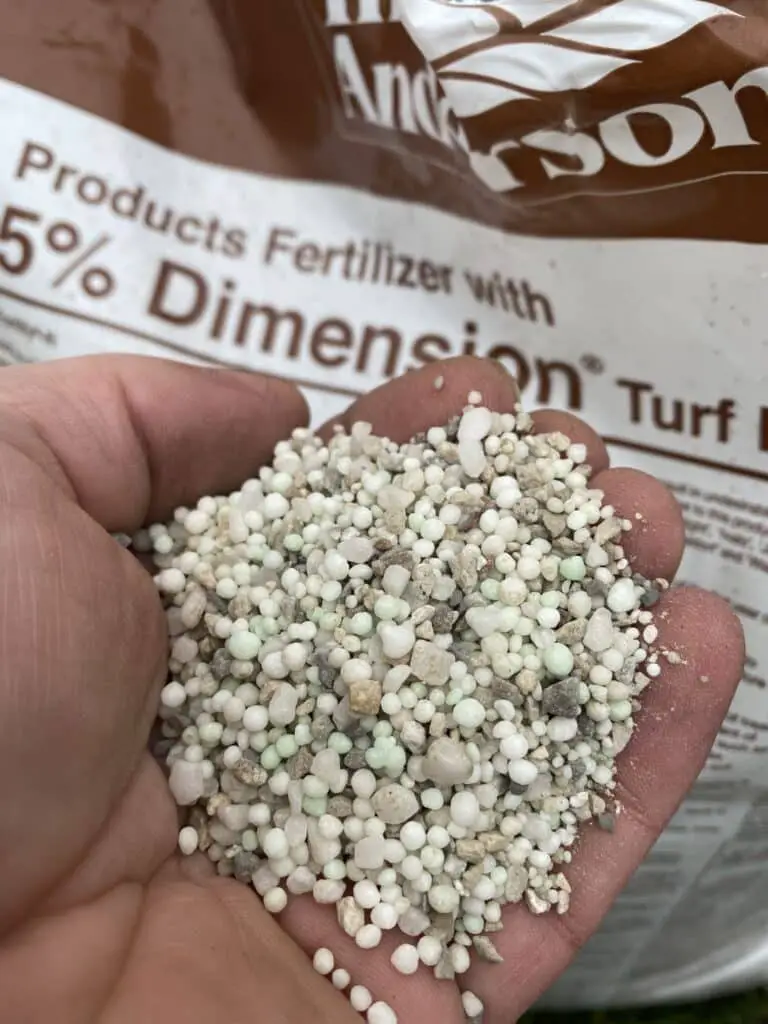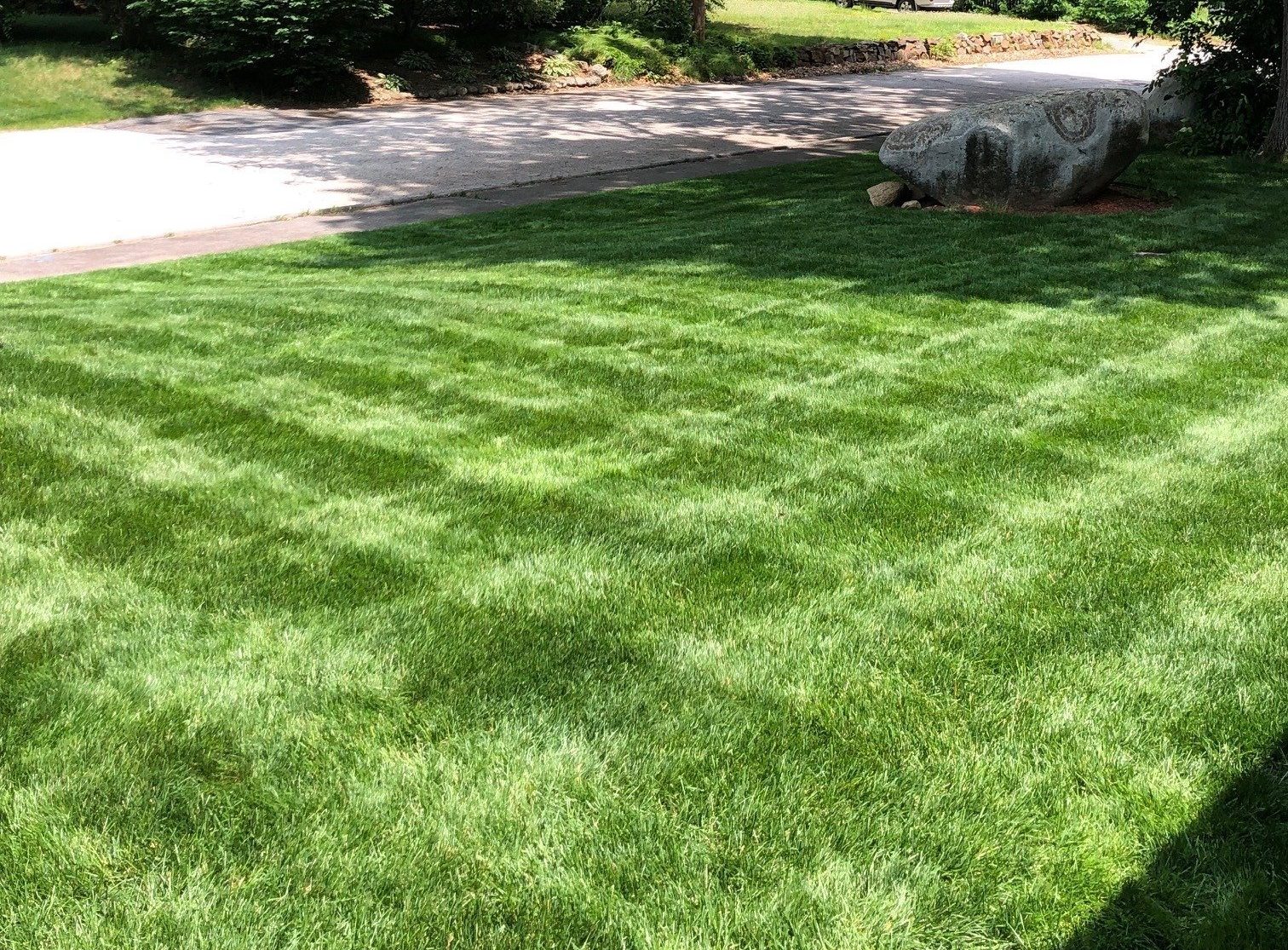When is the best time to apply pre-emergent herbicides to your lawn in order to prevent common weeds like crabgrass? The Lawn Phix team recommends spring as the optimal time for applying pre-emergent herbicides. We prefer Prodiamine because it’s long-lasting, but timing the application is crucial to target grassy weeds before they sprout. Once crabgrass sprouts, a post-emergent herbicide – like Drive XLR8 – will be needed to kill undesired weeds. With the following information, you can prevent weeds from taking up residence in your healthy green lawn.
Table of Contents
The Lawn Phix Split Application Approach
Lawn Phix recommends a split application approach to weed prevention. Generally, I advise residents to apply Prodiamine in April (particularly here in New England). Not only is the pre-emergent herbicide effective for killing crabgrass before they become a visible issue, but it will prevent other weeds like spurge and knotweed from sprouting, too. Prodiamine offers long-lasting protection (about nine months) against grassy and broadleaf weeds. Once these weeds emerge in lawns, they can be difficult to control. Targeting them early in the season with a pre-emergent herbicide prevents many weed types from growing.
For best results, apply Prodiamine up to two times during the spring when soil temperatures cross 50°F to 55°F and 65°F to 70°F. After the initial application of Prodiamine, I recommend employing a second pre-emergent application of Dimension to provide a continuous weed germination barrier.

The Pros & Cons of Prodiamine
Our lawn care experts favor Prodiamine as a pre-emergent herbicide because it prevents weed seeds from emerging after germinating. The vapor barrier stops and ultimately kills the weeds; if they can’t sprout up and mar the appearance of your lush lawn. Prodiamine can also be used on many types of lawns, including fescue, Bermuda grass, and St. Augustine grass. The pre-emergent works by blocking the division of plant cells involved in the formation of chromosomes and the formation of cell walls.
The downside of Prodiamine is that it may not prevent all weeds. In fact, this pre-emergent struggles to prevent many broadleaf weeds from sprouting. It also needs to be watered quickly; failing to water Prodiamine optimally will result in considerable reduction in its efficacy. Prodiamine is also vulnerable to photodegradation.
The Pros & Cons of Dimension
Lawn Phix recommends an application of Dimension 45 days after the initial application of Prodiamine. Why? Because this pre-emergent herbicide also features some post-emergent weed-killing properties (liquid Dimension, max rates, and applied with a surfactant). It can kill some types of young weeds, like crabgrass, soon after they sprout. Dimension is also more adept at killing broadleaf weeds than Prodiamine.
The downside of Dimension is that it is more expensive than Prodiamine. It also requires more of the product to kill some common weeds like crabgrass and is vulnerable to heat and water degradation.

Lawn Care Weed Control Challenges
Although other weed control chemicals work as pre-emergent herbicides, they are less effective than Prodiamine and Dimension in our estimation. It’s best to apply pre-emergent herbicide treatment as directed. Still, if you plan to plant grass seed this spring, you should avoid applying pre-emergent herbicides as they can prevent your desirable seeds from germinating – unless that chemical is Mesotrione (Tenacity).
It’s important to apply herbicides that won’t harm your lawn. Always read product labels when applying herbicides yourself. Or, you can rely on Lawn Phix to maintain your weed-free lawn. If you need to manage specific weeds, you should make sure that whatever pre emergent herbicide you choose is effective for the job. Additionally, don’t underestimate the weather when you apply pre emergent herbicides. Excess rain or not enough rain can impact how various products work.
Using a combination of Prodiamine and Dimension applications this spring will help you prevent various types of weeds from growing in your lawn. Rely on Lawn Phix for our customized lawn care that includes applications of weed control chemicals, fertilizers, and more. Contact us to learn more.
Spring Pre-Emergent FAQs
Is Mesotrione a good pre-emergent?
Lawn Phix pros prefer Prodiamine and Dimension. Mesotrione is not as effective as other pre-emergent herbicides. However, this chemical is generally safe to use when seeding your lawn.
Does Prodiamine prevent crabgrass?
Yes, when properly applied before crabgrass sprouts, Prodiamine can prevent crabgrass seeds from germinating.

